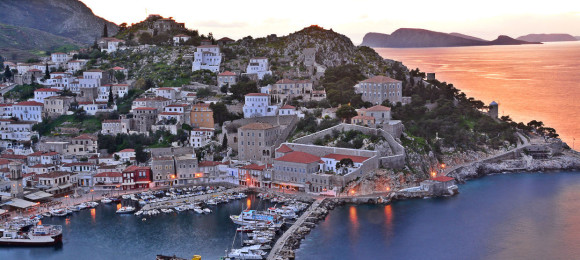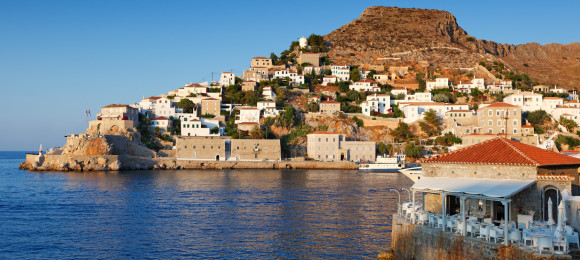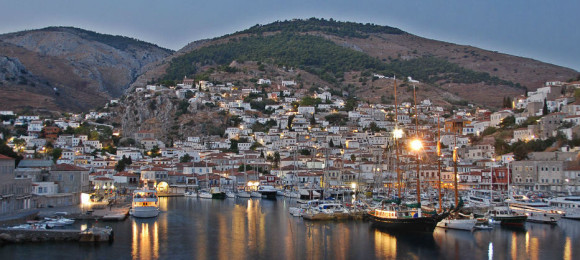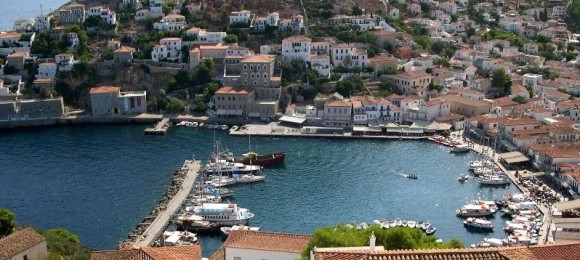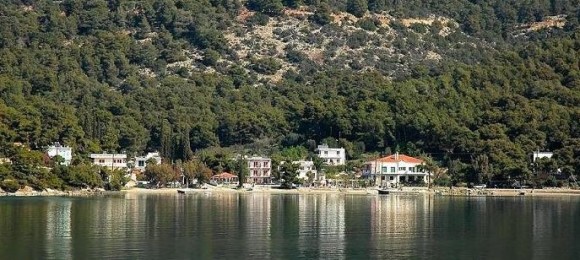Overview of Hydra
History, architecture and tradition create a unique fusion in Hydra, one of the most cosmopolitan Greek islands. Argosaronic Hydra shares a common past with Spetses, with significant naval commerce activity that helped in contributing to the 1821 Greek Revolution. The well preserved harbor fortifications, canyons, statues and imposing neoclassical mansions of three or four stores scattered around the port, witness the wealth and majesty of old times.
The island’s 18th century architecture is one of its trademarks. Grey stone manors blend with red tiled houses in white and blue, while the amphitheatrically built town features a lively waterfront – a cafes and restaurants day & night promenade. Hydra differs from the majority of Greek islands in other terms, too. The road network is very limited, while the beaches are few and rocky, due to the mountainous landscape. Moreover, all types of motor vehicles are prohibited in the island, so the best ways to get around is on foot, by donkeys and water taxis. Despite the above, and the fact that it is a pricey destination, Hydra is extremely popular among Greek islands. Its serene, sophisticated atmosphere attracts visitors from all over the world, as well as Greek weekenders and day-trippers, as it is close to Athens.
The island offers excellent touristic infrastructure and preserves a strong sense of tradition. It also has the reputation of being the artists’ favorite: In the ‘50s and ‘60s it became popular among poets, painters, musicians and celebrities from Greece and abroad, such as Leonard Cohen, John Lennon, Peter Ustinov, Melina Merkouri etc., while the film “Boy on a Dolphin” starring Sophia Loren was shot here. Hydra itself is an island “socialite” who yet refuses to give up on its origins. It remains a wild beauty, chic and unspoiled, reflecting Greece at its best.
Beaches
Food
Things to see & do
: Small bay with pebbles, where pines provide nice shade. Water sports available. 8.0 : Pebbles, crystal waters and limited seashore make up a beautiful beach spot. 8.0 : One of the most popular in the island, set under the castle canyons. It’s not actually a beach, but people dive in its deep blue waters from a small cement deck, to the sounds of music played by the bar just above. 8.0 : Tiny, pebbly and organized beach, located at the village of the same name. 7.0 : The only sandy beach of the island, organized and ideal for swimming. 7.0 : Pebbly beach, with sun beds, umbrellas and restaurants nearby, set at Vlyhos village. 7.0
: Kamini, Greek cuisine 9.0 : Harbor Front, Greek cuisine 9.0 : Town, Greek cuisine 8.0 : Town, Greek cuisine 8.0 : Town, Greek cuisine 8.0
: Trekking is a top activity in Hydra. One of the most popular and challenging walking routes is from the town to the Monastery of Profitis Ilias, in Mount Eros (the highest in the Argosaronic Gulf). It takes an hour or so, mainly in zig zag paths, but the view is superb. 9.0 : It takes place annually in late June, to honor local admiral Andreas Miaoulis. Apart from many art events, the festival’s highlight is the startling burning of a boat, as a representation of the Greek Revolution hero’s naval battle against the Turks. 9.0 : Among the nearly 30 manors and 300 captain houses found in Hydra, visit the landmark mansions of important island figures like Andreas Miaoulis and Georgios Kountouriotis. Also, the Tsamadou Mansion (now the National Merchant Marine Academy), the Tompazi Mansion (now a School of Fine Arts) and the impressive Lazaros Kountouriotis Mansion (now a part of the National Historic Museum). 9.0 : Have a nice stroll towards the Historical Archives Museum or head to the picturesque Kiafa district and follow the coastal road to villages Mylos and Kaminia. 8.0 : Have a fine taste of contemporary art at the Old Slaughterhouse of the island, where every summer the Greek institution DESTE Foundation hosts a series of significant art projects and events. 8.0
Reviews of Hydra
No text reviews of Hydra exist. You can be the first one to review Hydra.


